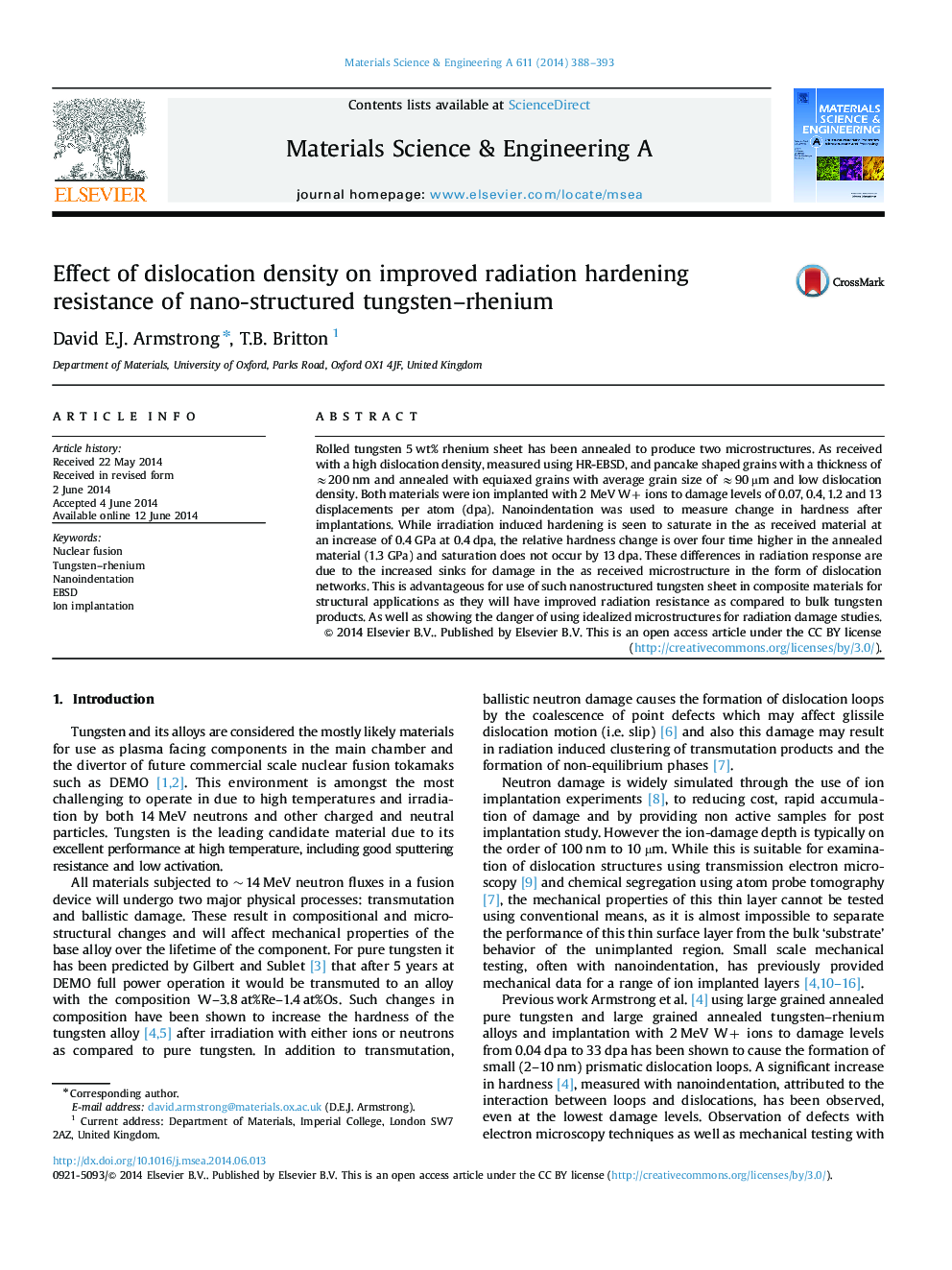| Article ID | Journal | Published Year | Pages | File Type |
|---|---|---|---|---|
| 7981031 | Materials Science and Engineering: A | 2014 | 6 Pages |
Abstract
Rolled tungsten 5 wt% rhenium sheet has been annealed to produce two microstructures. As received with a high dislocation density, measured using HR-EBSD, and pancake shaped grains with a thickness of â200 nm and annealed with equiaxed grains with average grain size of â90 µm and low dislocation density. Both materials were ion implanted with 2 MeV W+ ions to damage levels of 0.07, 0.4, 1.2 and 13 displacements per atom (dpa). Nanoindentation was used to measure change in hardness after implantations. While irradiation induced hardening is seen to saturate in the as received material at an increase of 0.4 GPa at 0.4 dpa, the relative hardness change is over four time higher in the annealed material (1.3 GPa) and saturation does not occur by 13 dpa. These differences in radiation response are due to the increased sinks for damage in the as received microstructure in the form of dislocation networks. This is advantageous for use of such nanostructured tungsten sheet in composite materials for structural applications as they will have improved radiation resistance as compared to bulk tungsten products. As well as showing the danger of using idealized microstructures for radiation damage studies.
Related Topics
Physical Sciences and Engineering
Materials Science
Materials Science (General)
Authors
David E.J. Armstrong, T.B. Britton,
